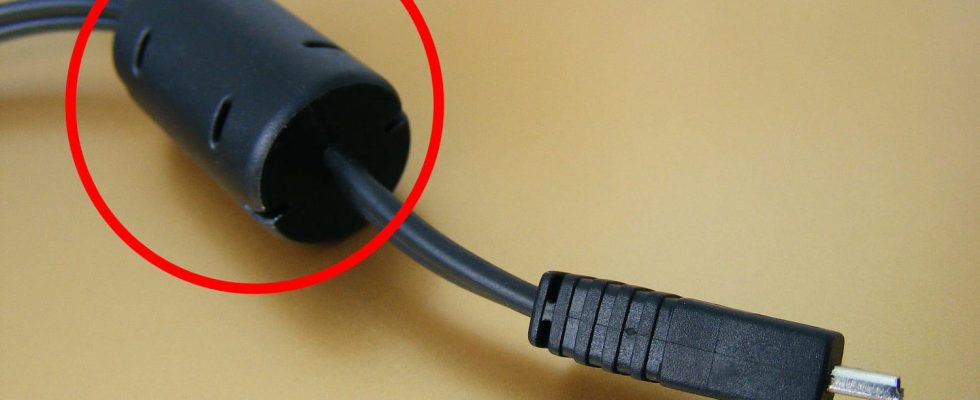You must have noticed the small plastic cylinder found on many computer charging cables and other cables. But what exactly is it for?
There are currently many types of computer chargers, with different functions. On many of them, there is this small plastic cylinder, referred to as a noise filter or sheath current filter.
This filter is intended to ensure that the operation of other electronic devices is not disturbed. This is because devices like laptops emit electromagnetic waves when turned on. These waves are then transmitted by the charging cable and diffused into the environment. This can disturb other electronic devices because of the waves. For example, it may affect the Wi-Fi network if it operates on the same wavelength or frequency.
The noise filter is essential for maintaining the quality of electronic transmissions and avoiding disturbances. Unfiltered electromagnetic waves can interfere with other electronic devices, degrading their performance and signal quality. The specific design of the filter, centered around the ferrite core, allows an effective reduction of these unwanted waves. When the electromagnetic waves come into contact with the ferrite, they are absorbed and neutralized, thus guaranteeing a smooth and disturbance-free transmission for the connected device and its surrounding environment.
If you find that your Wi-Fi speed at home is unsatisfactory or you are having general problems with your home network, it would be a good idea to have your chargers checked. If you have a charger without a pest filter, you can try completely unplugging it from the power outlet and from the computer it is charging. Then check your Wi-Fi again. If it is improved, your charger was causing a problem. Replace it with a charger with a parasite filter.
Phone chargers usually don’t have noise filters. The main reason is that phone chargers operate at different frequencies and wave intensities. Also, the nature of the waves emitted by phone chargers is such that it is less likely to cause electromagnetic interference with other nearby devices. In addition, the architecture and design of the internal circuitry of the phone chargers is optimized to minimize the production of such interference. As a result, manufacturers often find that a pest filter is not necessary, which also saves cost and size of the feeder.
